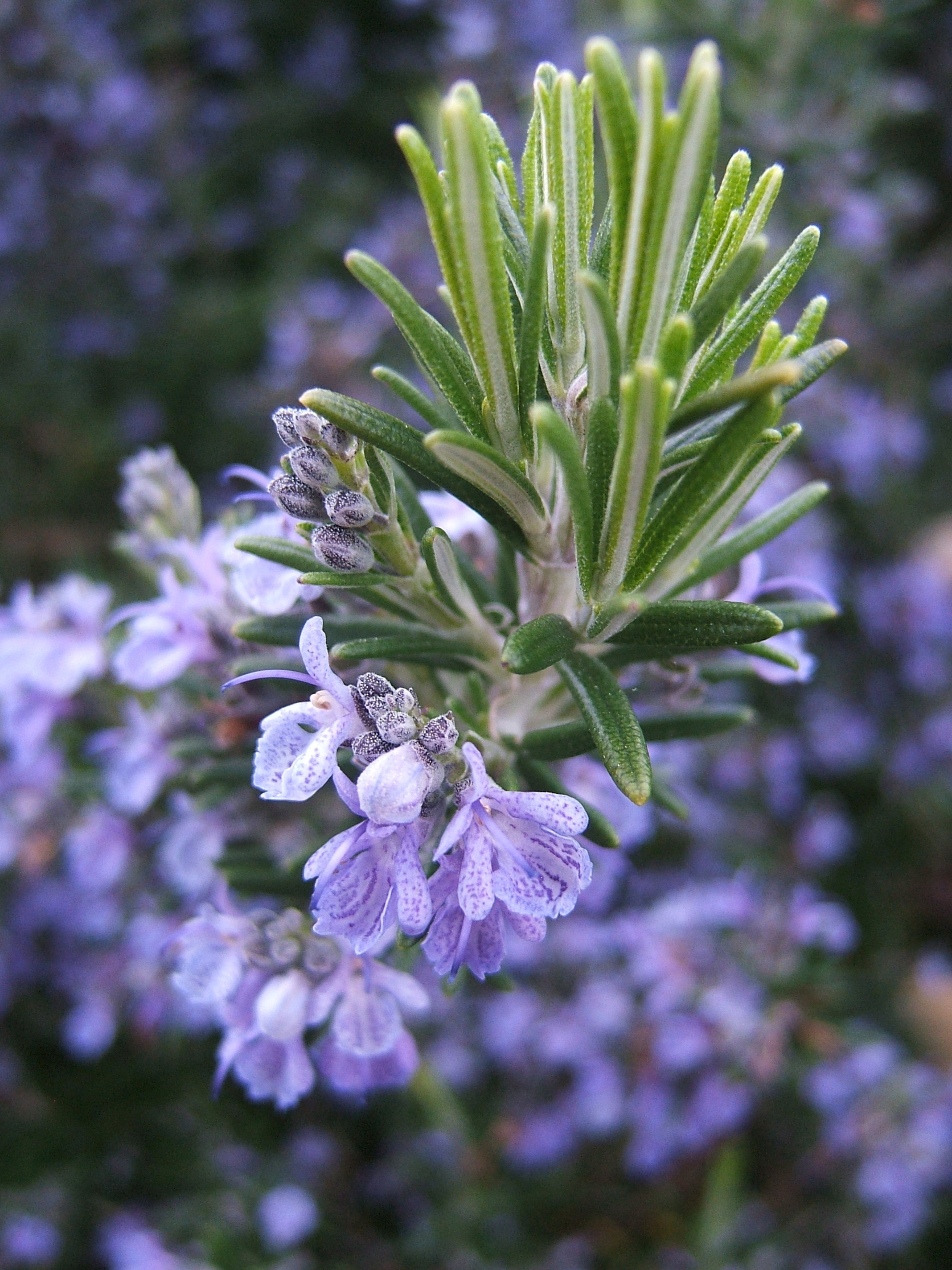

Rosemary

Rosemary is a tender evergreen shrub native to the Mediterranean area. Foliage is dark green, resinous, needle-like and leathery. The stems are square and turn woody after the first year. Blossoms range according to variety from white, to pink, and through several shades of blue. Rosemary grows from three to six feet in height. A new variety, "Sawyer's Selection" can reach up to eight feet. This variety produces large mauve-blue blossoms.
How to grow: To grow rosemary, select a sunny site with loamy soil. This herb is not hardy in our area. Try growing in a large pot. Sink the pot outdoors during warm weather. Protect the plant during cold weather by placing in a greenhouse or bringing indoors. Place in a sunny window. When the soil is alkaline, rosemary plants will remain small, however, the flavor will be more intense. To raise ph, add eggshells or potash.
Propagation: Rosemary is best propagated by cuttings or layering. Rosemary seeds germinate best in warm conditions. Plant seeds in a heated tray early in spring. Transplant when big enough to handle. Space 2 feet apart in the garden.
Harvesting: Rosemary is best when harvested fresh. However, dried Rosemary is a good alternative.
Preserving: Dry sprigs and leaves. Strip off leaves before storing. Place in glass containers in a cool dry area. For best flavor, crush leaves just before using.
Culinary uses: Add chopped leaves to salads. When softening onions, add butter and rosemary.. Add rosemary to oil before sauteing. Rosemary enhances veal, pork and lamb. Rosemary and white wine sauce add variety to turkey tenders or breast portion. Rosemary butter adds pungent flavor to vegetables.
Other uses: Rosemary can be used in potpourri. Scatter stems on the barbecue to discourage insects.
4116 E. 15th Street
Tulsa, OK 74112-6198
(918)746-3701